History of Chianti Classico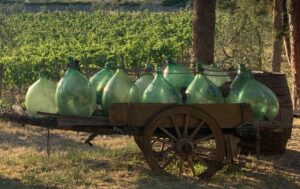
While Italy grows a lot of different red grapes, the most widely planted is sangiovese. In Tuscany, sangiovese is the basis of all the best wines they produce, from Chianti to Brunello and Vino Nobile. But Chianti Classico is by far the oldest and most important.
The word “classico” on an Italian wine label refers to the original, classic area where the wine was made. The Chianti Classico region in Tuscany dates back to medieval territory disputes between Florence and Siena, two powerful city-states of the Middle Ages. If you’ve come on our Tuscany tour, you will have heard all about the historic animosity between these two cities that still lives on today!
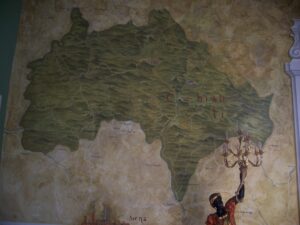 In 1384, Florence established a military and political zone called the League of Chianti which officially established the geographic confines of Chianti Storico, as it was called then. The wines at that time were made mainly with an indigenous grape called canaiolo.
In 1384, Florence established a military and political zone called the League of Chianti which officially established the geographic confines of Chianti Storico, as it was called then. The wines at that time were made mainly with an indigenous grape called canaiolo.
Baron Ricasoli steps in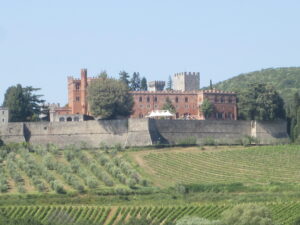
In the mid 1800’s, the owner of Castello Brolio left Florence with his beautiful new wife, Anna, to raise a family in the quiet of the Chianti countryside. Baron Bettino Ricasoli was interested in making better wine and so began experimenting. Using mainly sangiovese for the first time, he formulated a recipe for Chianti Classico. The recipe was tinkered with over the years, trebbiano, an abundant white grape, was added in greater quantities. There was a lot of quantity, but the quality of the wines suffered.
By the mid-20th Century in the US, the name “chianti” had become synonymous with a thin, acidic Italian wine served in a straw-covered bottle. That image is so strong that even today we meet people who turn their nose up at chianti, which is unfortunate. There is a lot of great chianti coming out of Tuscany these days, especially in the historic Chianti Classico area between Florence and Siena.
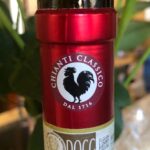 In the 1960’s, the Consorzio di Chianti Classico adopted the Gallo Nero, or black rooster, as its symbol. This helped to differentiate the higher quality Classico wines from simple chianti wines made in the surrounding area.
In the 1960’s, the Consorzio di Chianti Classico adopted the Gallo Nero, or black rooster, as its symbol. This helped to differentiate the higher quality Classico wines from simple chianti wines made in the surrounding area.
Chianti Classico today
Chianti Classico’s geographic area is larger now than it was 700 years ago and there are hundreds of producers. The Ricasoli family is still involved in making wine in the region, with Castello Brolio and Castello di Cacchiano estates. Other historic Ricasoli estates no longer owned by the family, such as Castello Meleto, still make wine. Sometimes, traveling through the area north of Siena, it seems like the ancient Ricasoli family use to own most of it!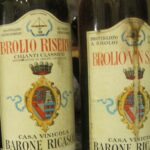
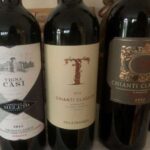 The methods for making Chianti Classico have changed for the better. Rules for making any Italian DOCG wine are strict. Today, Chianti Classico must be made with 80-100% locally grown sangiovese. Up to 20% traditional Tuscan varieties and/or the international grapes merlot and cabernet may be added. All grapes must be grown in the Classico area. Instead of using large Slavonian oak casks, most producers use smaller French oak barrels to age. Tried and true methods for growing better grapes are used in the vineyard as well.
The methods for making Chianti Classico have changed for the better. Rules for making any Italian DOCG wine are strict. Today, Chianti Classico must be made with 80-100% locally grown sangiovese. Up to 20% traditional Tuscan varieties and/or the international grapes merlot and cabernet may be added. All grapes must be grown in the Classico area. Instead of using large Slavonian oak casks, most producers use smaller French oak barrels to age. Tried and true methods for growing better grapes are used in the vineyard as well.
Look for Chianti Classico DOCG the next time you go to the wine store. You’ll know Chianti Classico by the black rooster on the label!
Leave a Reply